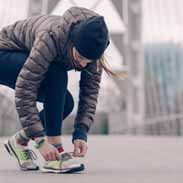Physical Activity Guidelines For Americans Flashcards, test questions and answers
Discover flashcards, test exam answers, and assignments to help you learn more about Physical Activity Guidelines For Americans and other subjects. Don’t miss the chance to use them for more effective college education. Use our database of questions and answers on Physical Activity Guidelines For Americans and get quick solutions for your test.
What is Physical Activity Guidelines For Americans?
Physical Activity Guidelines for Americans are national guidelines designed to promote physical activity and good health. The guidelines were developed by the U.S. Department of Health and Human Services (HHS) in 2008 and updated in 2018. The guidelines recommend that Americans get at least 150 minutes of moderate-intensity physical activity or 75 minutes of vigorous-intensity physical activity each week, along with muscle-strengthening activities on two or more days a week that work all major muscle groups (legs, hips, back, abdomen, chest, shoulders, and arms). These recommendations apply to children as well as adults. For children between 6 and 17 years old, the HHS recommends that they get 60 minutes or more of physical activity each day including aerobic exercise (vigorous-intensity activities), muscle-strengthening activities (such as pushups), and bone-strengthening activities (such as hopping). The HHS also encourages individuals to reduce their time spent sitting by taking regular breaks throughout their day; it is recommended that people stand up and move around at least every 30 minutes while working or studying. Additionally, the HHS recommends avoiding long periods without any movement other than standing while watching television or using a computer for extended periods of time. The Physical Activity Guidelines for Americans are based on scientific evidence showing that regular physical activity can improve overall health: it helps reduce risk factors for chronic diseases such as heart disease and type 2 diabetes; it helps control weight; it can help prevent falls in older adults; and it can improve mental health by reducing anxiety and depression symptoms. It is important to note that these health benefits increase when individuals reach the recommended amount of weekly physical activity even if they don’t meet the full recommendation all at once.










